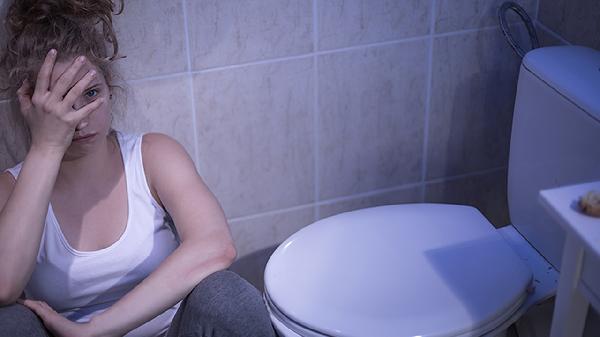Male reproductive system infections, particularly chronic ones, are notoriously difficult to treat and prone to recurrence. This is primarily due to the anatomical and functional interdependence between the male reproductive and urinary systems, the presence of drug-resistant barriers, and the emergence of antibiotic-resistant bacterial strains. Effective treatment requires selecting antibiotics that are sensitive to the pathogens, capable of penetrating reproductive tissues, and effective against concurrent urinary tract infections.

Anatomical and Functional Interdependence
The male reproductive and urinary systems are closely linked, often leading to concurrent infections. Infections in one system can easily spread to the other, creating a cycle of reinfection. This interdependence complicates treatment, as addressing one infection without effectively managing the other can lead to recurrence.
Drug-Resistant Barriers
The male reproductive system contains several barriers that hinder the penetration of antibiotics. For instance, the prostate capsule, composed of a lipid membrane, prevents many drugs from reaching therapeutic concentrations within the prostate tissue. Similarly, the blood-testis and blood-epididymis barriers protect the testes and epididymis from bacteria and toxins but also block the entry of antibiotics.
Emergence of Antibiotic Resistance
The widespread use of antibiotics has led to the development of resistant bacterial strains through genetic mutations or plasmid-mediated resistance. This ongoing challenge necessitates the continuous development of new antibiotics and underscores the importance of selecting the right drug based on sensitivity testing.
Common Pathogens and Diagnostic Approaches
The pathogens causing male reproductive system infections often overlap with those responsible for urinary tract infections. Escherichia coli is the most common culprit, but cases of gonococcal urethritis and prostatitis are on the rise. Other emerging pathogens include Proteus, Enterococcus, Serratia, and hospital-acquired bacteria like Pseudomonas aeruginosa and Klebsiella. Additionally, anaerobic bacteria and non-bacterial pathogens such as Ureaplasma urealyticum and Chlamydia trachomatis are increasingly recognized as significant contributors.
Accurate diagnosis requires urine cultures obtained via suprapubic aspiration or catheterization, as well as semen and prostate fluid cultures paired with antibiotic sensitivity testing. This ensures the identification of the causative pathogens and the selection of effective antibiotics.
Treatment Strategies
The choice of antibiotics must consider the pathogen’s sensitivity, the drug’s ability to penetrate reproductive tissues, and its effectiveness in the urinary tract. Commonly used antibiotics include cephalosporins, quinolones, and tetracyclines.
Cephalosporins
Cephalosporins are broad-spectrum antibiotics with low hepatotoxicity and nephrotoxicity, making them widely used in clinical practice. First-generation cephalosporins, such as cefradine and cefazolin, are effective against penicillin-resistant Staphylococcus aureus but are limited by their susceptibility to β-lactamases. Second-generation cephalosporins, like cefuroxime, offer broader coverage, while third-generation cephalosporins, such as ceftriaxone, are highly effective against Gram-negative bacteria, including Pseudomonas aeruginosa.
Quinolones
Quinolones, particularly fluoroquinolones, are synthetic antibiotics with a broad spectrum of activity. They are highly effective against Gram-negative bacteria, including resistant strains and Pseudomonas aeruginosa, and also exhibit good activity against Gram-positive bacteria. Their ability to penetrate prostate tissue and achieve high urinary concentrations makes them ideal for treating male reproductive system infections. Studies show that quinolones like moxifloxacin and ciprofloxacin achieve therapeutic concentrations in prostate tissue, with efficacy rates ranging from 50% to 90% for bacterial prostatitis.
Other Antibiotics
While broad-spectrum penicillins and aminoglycosides may be effective for some urinary tract infections, their poor penetration into reproductive tissues limits their use for male reproductive system infections. Sulfonamides, traditionally effective against Gram-positive and Gram-negative bacteria, have fallen out of favor due to their adverse effects and limited efficacy in treating deep-seated infections.
Treatment Duration and Adjunctive Therapies
Acute infections often require higher antibiotic doses, with intravenous administration for 1–2 weeks followed by oral antibiotics for 2–4 weeks. Chronic infections necessitate longer oral antibiotic courses, typically lasting 1–3 months. Adjunctive therapies, such as physical therapy, microwave therapy, and heat therapy, can enhance treatment outcomes.
Conclusion
Treating male reproductive system infections requires a multifaceted approach that addresses the unique challenges posed by anatomical barriers, antibiotic resistance, and the interplay between the reproductive and urinary systems. By selecting the right antibiotics, extending treatment durations, and incorporating adjunctive therapies, clinicians can improve the management of these complex infections.
























